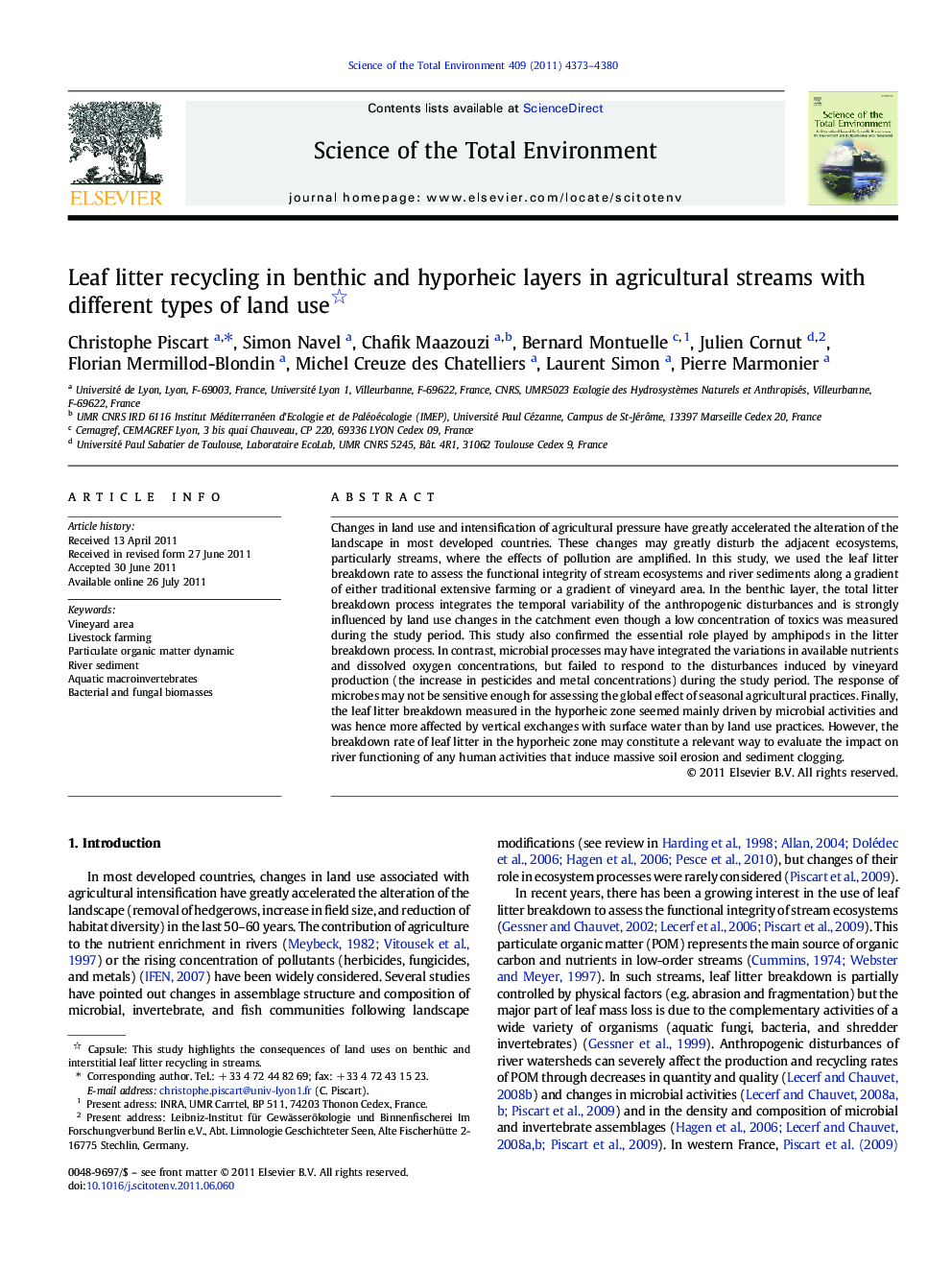| Article ID | Journal | Published Year | Pages | File Type |
|---|---|---|---|---|
| 4429929 | Science of The Total Environment | 2011 | 8 Pages |
Changes in land use and intensification of agricultural pressure have greatly accelerated the alteration of the landscape in most developed countries. These changes may greatly disturb the adjacent ecosystems, particularly streams, where the effects of pollution are amplified. In this study, we used the leaf litter breakdown rate to assess the functional integrity of stream ecosystems and river sediments along a gradient of either traditional extensive farming or a gradient of vineyard area. In the benthic layer, the total litter breakdown process integrates the temporal variability of the anthropogenic disturbances and is strongly influenced by land use changes in the catchment even though a low concentration of toxics was measured during the study period. This study also confirmed the essential role played by amphipods in the litter breakdown process. In contrast, microbial processes may have integrated the variations in available nutrients and dissolved oxygen concentrations, but failed to respond to the disturbances induced by vineyard production (the increase in pesticides and metal concentrations) during the study period. The response of microbes may not be sensitive enough for assessing the global effect of seasonal agricultural practices. Finally, the leaf litter breakdown measured in the hyporheic zone seemed mainly driven by microbial activities and was hence more affected by vertical exchanges with surface water than by land use practices. However, the breakdown rate of leaf litter in the hyporheic zone may constitute a relevant way to evaluate the impact on river functioning of any human activities that induce massive soil erosion and sediment clogging.
► In this study we examine the effects of vineyard and farmland on leaf litter recycling. ► We study the effects at the benthic layer and in the interstitial. ► Increasing agricultural intensity strongly affects the ecological process only at the benthic layer. ► No statistically significant effects observed on microbial activity and biomasses. ► The recycling process in the interstitial reflects the local conditions in terms of clogging but not land use.
